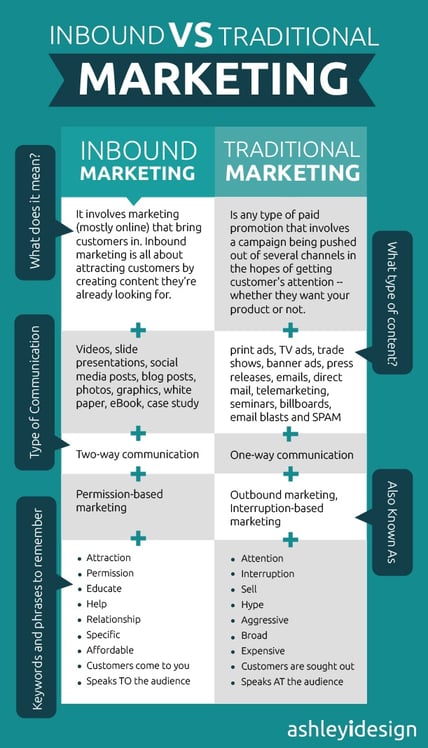Inbound marketing is a marketing methodology that is designed to draw visitors and potential customers in, rather than outwardly pushing a brand, product or service onto prospects in the hope of lead generation or customers.
In terms of digital marketing, this means using a combination of marketing channels – most commonly content marketing, search engine optimization (SEO), and social media – in creative ways to attract people’s attention. The aim of a successful inbound marketing campaign is to increase reach and drive quality traffic, engagement and conversions using ‘earned’ and ‘owned’ media.
Inbound marketing software provider HubSpot coined the phrase ‘inbound marketing’ back in 2006. HubSpot defines inbound marketing as the process of attracting, converting, closing and delighting customers. Through using various types of content at different stages of the buying cycle, the ‘inbound methodology’ is “the best way to turn strangers into customers and promoters of your business.”
Want to learn more about inbound marketing? Download our 2019 Jewelry Store Marketing Guide!
Inbound Marketing vs Outbound Marketing
The clue to understanding the differences between inbound and outbound marketing is in the name. Inbound marketing focuses on drawing potential customers in, while outbound marketing is about outwardly pushing a business’s offering. Inbound marketing is about earning attention, while outbound typically involves buying it.
Inbound Marketing: Owned And Earned Media
Inbound marketing uses owned and earned media to engage potential customers in creative ways.
- Owned media are those channels that a business has control over. For example, your website, blog, brand social media profiles, product landing pages and YouTube channel. You choose what to publish, how to publish it, and when.
- Earned media is the coverage you earn as a result your hard work. Offline, this includes traditional coverage in newspapers and magazines. Online, it’s things such as coverage on news sites often gained through digital PR, but also mentions on social media, use of a campaign hashtag, conversations in online forums, and online reviews. You have less control over earned media, but it should be a reward for the work you’ve put into your inbound marketing campaign.
Outbound Marketing: Paid Media
On the other hand, outbound marketing is more readily associated with paid media. This could be traditional offline advertising, PPC and display advertising, or paid emails.
Paid media also encompasses social media advertising, for example Facebook advertising or Twitter promoted posts.
Although typically associated with outbound marketing, it’s worth noting that social media advertising is often an effective way to boost the performance of inbound marketing campaigns. Advertising on Facebook, for example, allows you to promote your content and campaign to your target audience, no matter how niche it might be.
Benefits Of Inbound Marketing
Reach the right audience in the right place to generate quality traffic
By focusing your inbound marketing strategy on reaching the right audiences in the right places, you can attract your target customers in order to meet your digital marketing objectives. This is instead of spending money attracting traffic from people who are unlikely to ever convert.
Increase trust
Inbound marketing is all about giving potential customers the information they are looking for – even if they don’t know it – in a creative and engaging way. It’s not about pushing unwanted sales at every opportunity. By using inbound marketing as a way to present your brand as a useful and reliable resource, the hope is they’ll come to you when the time to purchase does arise.
Protect from over-reliance on one channel
By pursuing quality traffic from a variety of sources – organic search, social media referrals, referrals from other websites talking about your amazing work – you reduce the reliance on one channel alone, and therefore the associated risk.
Examples Of Inbound Marketing
A great example of inbound marketing for the jewelry industry is to create a piece of content -- such as an engagement ring buyer’s guide -- that can provide value to your customer over a set period of time.
During this period, your customer should be entered into a sequence using an email marketing platform, where they will receive periodic emails and additional pieces of content to further assist them on their buyer’s journey. The goal here is to nurture these potential customers (or “leads”) into becoming actual customers while positioning your jewelry store as a thought leader in your market.
Contact GemFind to get started. 800-373-4373
Inbound Marketing Infographic:


